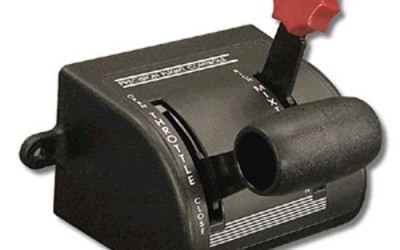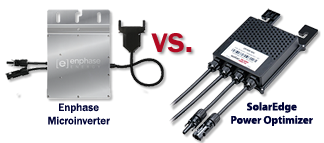Apr 27, 2015
We need power to thrive as a progressive nation. And in everything we do, even at home, we use energy when we eat, sleep, work and play. Energy powers your microwave, cell phone, alarm, tv, everything. But do you know the source of the energy that powers your daily life? The energy that most households currently use is produced through fossil fuels; oil, natural gas, coal. The downside to fossil fuel is that we will eventually run out, and the combustion required to generate energy from this material causes greenhouse gases and air pollutants that are detrimental to Earth and our health. Harm to our planet from pollution can come in the form of high toxicity waters, acid rain, ozone depletion, and more. Likewise, negative health effects from pollution can encompass increased risk for cardiovascular disease, asthma, and respiratory illnesses. Fossil fuels are also, by nature, combustible. This leads to the risk of explosions and accident-related fatalities for people working in these facilities. “The energy sector remains one of the most dangerous industries for US workers. A transition to renewable energy generation utilizing sources such as wind and solar could potentially eliminate 1300 worker deaths over the coming decade,” says Dr. Steven Sumner, M.D, an internal medicine resident at Duke University. The Union of Concerned Scientists lists several other benefits to going solar. little to no global warming emissions improved public health improved environmental quality inexhaustible supply of energy economic benefits stable energy prices more reliable energy systems This is the reason the government and public leaders are encouraging the transition to renewable energies, like solar and wind energy.... read more
Apr 21, 2015
At DBM Solar, we’re focused on educating clients on the benefits of solar power energy. Outside of the technology angles of solar, there’s never-ending, interesting facts related to the sun. An interesting topic that’s relevant to this month, Stress Awareness Month, is how the sun can influence your well-being. The cold of winter months may negatively affect your mood. Luckily, with spring finally here, brighter days are ahead. During winter months, or even in the summer in places where the weather is constantly rainy or skies are regularly overcast, this type of weather may negatively affect your mood. This type of stress is called Seasonal Affective Disorder (SAD). It is a type of depression related to less exposure to the sun, which leads to less Vitamin D absorption. The best remedy is to step outdoors and enjoy the sun. If you can’t escape being cooped up in the home because of being snowed in or extreme cold temperatures, sufferers of SAD may benefit from light therapy. Like PV systems, the body picks up the sun’s light spectrums and converts the energy into something positive. Most light therapy lamps emit anywhere from 2,500 to 10,000 lux wide-spectrum light. The light is intended to mimic real sunlight via a natural glow. While that’s a great solution to winter months, does light have stress-alleviating benefits during warmer seasons, too? Yes. Some studies suggest that proper light spectrums may even mitigate jet lag, fatigue, insomnia, and more. Light and solar technology is... read more
Apr 16, 2015
As far as we know the Sunny Boy/Sunny Island combo is the only AC coupled system that provides this feature. Click to read features.
read more
Apr 10, 2015
Every year, the government gives back the excess tax that you have put in all year. An average tax refund these days hovers around ~$3,000. That’s no small amount of pocket change. Unfortunately, many of us rush to spend that windfall of cash on the latest shiny object. Don’t waste hard-earned tax money on frivolous purchase with little lifespan. This year, invest that money in something that will pay you back, solar power. What better way to save on utility expenses than using an energy source that pays for itself. In fact, many residential solar power installations output enough energy to create a surplus, which can be sold to local power companies. Use power and make money? Yes. Across various studies, reports of energy savings range from $40 – $200 per month with residential solar power solutions. An article on cleantechnica.com reports even greater savings over the life of a solar power system. Their article lists the savings based on various states with more or less sunshine. Below is a sample of cost savings that solar could bring you over the life of a PV system. California: $34,260 New York: $31,166 Florida: $33,284 Texas: $20,960 Hawaii: $64,769 Use this year’s tax refund to make a wise investment in solar energy. DBM Solar’s solar feasibility studies explain the benefits of solar energy and offer custom solutions specific to your energy needs. We look at how much electricity is used and design a custom system for your home or... read more
Apr 7, 2015
There are several pros and cons to DC optimizers vs Micro-Inverters. Click now to get the facts.
read more
Apr 6, 2015
Renewable Energy is any energy derived from replenishable or recurring sources in nature. sunlight wind rain tides geothermal heat The concept of harnessing renewable energy on a massive scale is nothing new. However, progress has been inhibited by expensive initial investments or large players with deep pockets in non-renewable energies creating road blocks. With the advancement of technology, costs for alternative energy have come down considerably, making cost and competition less of an issue. Today, energy from solar and other renewable energy sources is finally scalable, leading to solar power being welcomed by companies and households. Fortune 500 companies, like UPS, are embracing the cost savings, too. They recently built a major facility in California that encompasses solar panels, a move to protect themselves from the risk of rising fossil fuel-based energy costs. Solar panels have become more advanced than ever before, helping save energy costs by being able to support a recognizable portion of energy needs. So much energy can be produced from a single home with solar panels that often times more energy than necessary is produced and can be sold “back to the grid.” Will you join the energy... read more
Mar 25, 2015
Solar power has had a slow evolution. While some may say that the concept of solar power dates back to the B.C. era via the use of magnifying glass, we’ll focus on listing events that are applicable to what modern times associate with solar power. 1839 19-year-old Frenchman Edmund Becquerel discovered photovoltaic effect. 1894 Patent US527379 is granted to Melvin Severy for a “Solar cell.” 1888-1891 Aleksandr Stoletov creates the first physical solar cell. 1904 Albert Einstein publishes a theory on the photoelectric effect. 1923 Albert Einstein received the Nobel Prize for his theories explaining the photoelectric effect. These theories paved the way for the creation of photovoltaic cells of which modern-day solar panels are made out of. 1959 Hoffman Electronics creates an efficient solar cell, introduces grid contact. 1967 First manned spacecraft powered by solar cells, Soyuz 1. 1977 White House, via President Jimmy Carter, installs solar panels to promote solar energy. Solar energy has grown since its discovery, continuously improving and becoming more viable as an energy solution. With more advanced technologies, namely nanotechnologies, the contributions of the PV cell now provide multiple benefits to humankind. Today, the use of solar power takes far less roof space, and less cost to fully install solar power technology in an average house. With solar being more affordable than ever, better quality of life for humanity and Earth are getting closer,... read more
Mar 18, 2015
A single appliance can use one kWh of electricity in an hour when it is rated at 1,000 watts. Imagine how much power is used in your home when all appliances are combined.all the appliances in your house that uses electricity and imagine how much power it uses up when combined. Do you know what makes constitutes the majority of your electricity bill? Are you aware which appliances cause fluctuating consumption of energy in your home? You might be surprised. We’ve broken down the top 5 appliances that eat up your power bill the most: 5. Lighting Lights are in every room, so this one isn’t so surprising. What is surprising is how much money you can save by switching to energy efficient bulbs. 4. Heating System A heating system is one of the most necessary appliances in a home, especially during cold winter months. A furnace’s energy consumption depends on the model you have. More modern, EnergyStar rated furnaces could use as much as 50% less energy than older furnaces. 3. Water Heater Your water heater can use a whopping 10%+ of your home’s energy. Hot water usage can vary by water heater type (standard, solar, tankless, etc.) and size. An easy fix to save a few bucks is to turn down the max temperature setting by a few degrees. You’ll never notice in the shower, but you will notice on your utility bill. 2. Refrigerators A home’s refrigerator is often within the top 2 or 3 energy sucking items in a home. Surprising that one appliance could consume so much energy, right? Even more than all of... read more
Mar 11, 2015
As early as 1916, it has been common practice to move the clock one hour forward and back each year for Daylight Savings. While this practice is widely known in developed countries, did you know that only 70 countries total follow the twice a year adjustment? Two of the biggest nations, China, and India, do not follow it. Originally advocated to reduce evening use of lighting, current advocates of putting the clock forward now say that it promotes economic growth. For as much advocacy there is for Daylight Savings, there is the same or more sentiment against it. Critics of Daylight Savings say that the practice is outdated. Clock shifts are known to cause problems with consistent travel, record keeping, billing, synchronization of devices, particularly healthcare devices, heavy equipment, etc. One of the largest disruptors to advocates of Daylight Savings is the growing criticism for its negative effects on health. Some studies show that heart attacks are noticeably more common following the first three weeks after the spring transition of Daylight Savings. Likewise, they’re less common during the autumn transition. Additional studies have also associated an increase in suicide immediately following the stress on the body from time changes. While Daylight Savings came into mainstream play in the 1970’s, it seems that as time progresses, more and more countries are bowing out of the practice. As recently as 2005, Kazakhstan eliminated DST due to health complications they believed were a result of the time change. Additionally, as of 2011, Russia decided to stay in DST all year long. With how connected to technology society is these days, it seems... read more





